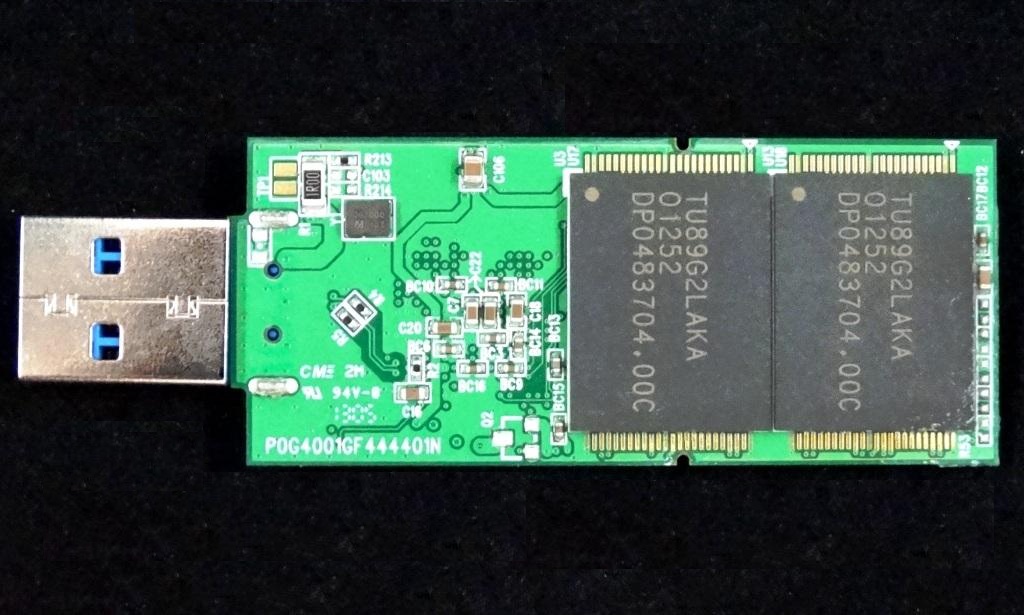The MLC NAND modules specifically are the TU89G2LAKA Toggle-Mode chips made by Toshiba. Both the front and back of the PCB have two chips each, hence four in total. Each chip has a size of 64GB for an overall capacity of 256GB:
Keep in mind though that only 235GBs are usable in Windows:
TEST SYSTEM AND BENCHMARKS
The benchmark suites used for testing will most likely already be on your system, as essentially all of this software is available online. As such, it allows direct correlation between reader and reviewer due to the ease of accessibility, and hence results can simply be compared between different test systems and configurations.
Real-world benchmarks included a batch of files and folders with capacities of 250MB, 500MB, and 1000MB respectively to test file transfer performance. Windows 7 boot times were also monitored and timed starting from the OS load screen to Steam’s login window (the last program to load).
Each test was performed three times for consistency. All media used was formatted and properly set-up. For the Patriot Supersonic Magnum 256GB specifically, tests were run to measure speeds in both USB 2.0 and USB 3.0 modes. Unless otherwise stated the results for the Magnum at USB 3.0 will always be the left-hand screenshots, and of course the right-hand screenshots will be the Magnum running at USB 2.0 to show the difference between the two architectures.
 The SSD Review The Worlds Dedicated SSD Education and Review Resource |
The SSD Review The Worlds Dedicated SSD Education and Review Resource | 


Send me that pen drive Les, too bad it isn’t in a metal casing like the Lexar Triton, but you cant have everything.
Not bad but a 64GB SanDisk Extreme got a 782.95 Anvil score on 100% incompressible setting.
https://www.thessdreview.com/Forums/storage/3522-post33434.htm#post33434
Look at the SanDisk Extreme 4K scores.Not bad for a flash drive.